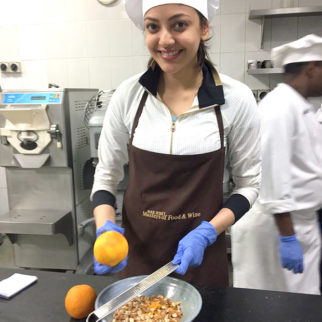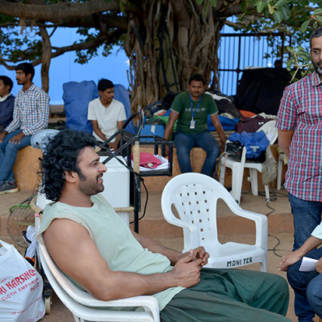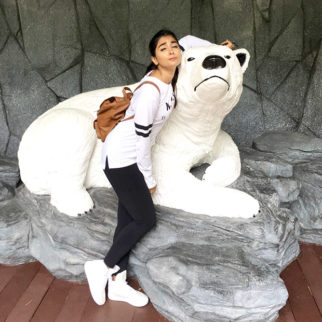Deconstructing the VFX of Bhaag Milkha Bhaag
-
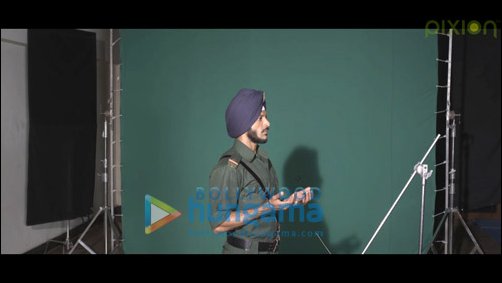 For a sportsman, chasing the adrenaline rush of hearing thousands applaud your name in harmony – is an intoxicating feeling many of us will never be able to comprehend. And there would not be a better way to celebrate an athlete’s spirit by immortalizing his life on film. Rakesh Omprakash Mehra’s latest film, Read More">Bhaag MilkhaRead More
For a sportsman, chasing the adrenaline rush of hearing thousands applaud your name in harmony – is an intoxicating feeling many of us will never be able to comprehend. And there would not be a better way to celebrate an athlete’s spirit by immortalizing his life on film. Rakesh Omprakash Mehra’s latest film, Read More">Bhaag MilkhaRead MoreFor a sportsman, chasing the adrenaline rush of hearing thousands applaud your name in harmony - is an intoxicating feeling many of us will never be able to comprehend. And there would not be a better way to celebrate an athlete's spirit by immortalizing his life on film. Rakesh Omprakash Mehra's latest film, Bhaag Milkha Bhaag is based on the life of legendary Indian sprinter Milkha Singh which has received many accolades, and garnered an enormous Rs. 92 crores in the domestic box-office in 18 days of its release. One of the most interesting aspects in the filmmaking process that contributed largely to its success was the visual effects process. Pixion Studios was roped in to recreate an era lost in time, Viral Thakkar the creative head of VFX along with Prashant Thakur lead compositor, Sudhir Trivedi CG supervisor and Kinchit Desai VFX line producer - manned a force of a hundred artists to work day and night to deliver the VFX of the film, in a staggering three months time. Bollywood Hungama's Philip Bode gets the team from Pixion Studios to talk about recreating old stadiums digitally, setting up using 7 different angles for a crowd and the challenges in producing the visual effects for Bhaag Milkha Bhaag.

-
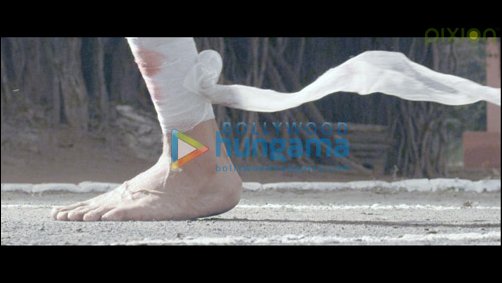 Read More">“The biggest challenge was to actually make it look as real as possible” “The Lahore race was 8-1/2 minutes which was really long and took a lot of time to achieve. The biggest challenge was to actually make it look as real as possible; we captured intricate details as it was shot in Pakistan. WithRead More
Read More">“The biggest challenge was to actually make it look as real as possible” “The Lahore race was 8-1/2 minutes which was really long and took a lot of time to achieve. The biggest challenge was to actually make it look as real as possible; we captured intricate details as it was shot in Pakistan. WithRead More"The biggest challenge was to actually make it look as real as possible"
"The Lahore race was 8-1/2 minutes which was really long and took a lot of time to achieve. The biggest challenge was to actually make it look as real as possible; we captured intricate details as it was shot in Pakistan. With the environment going to be hot, we added Heat waves to add to the atmospheric effect. The track back then is not the same that we have today; it was all muddy and dusty which was augmented digitally. There was also a scene where Farhan got hit by some goons on the leg, but still ran that race with bloodied bandages wrapped around his leg, that entire race had CG blooded fused to enhance the narrative of the shots."

-
 “While the camera rotates around the principal actor, his body morphs into a pumped up version of himself” “This project posed quite a few challenges for instance, one important scene where-in Farhan was being trained in Ladakh, Read More">with a turnaround shot of him sitting and transforming. His trainer in the scene gives him a skippingRead More
“While the camera rotates around the principal actor, his body morphs into a pumped up version of himself” “This project posed quite a few challenges for instance, one important scene where-in Farhan was being trained in Ladakh, Read More">with a turnaround shot of him sitting and transforming. His trainer in the scene gives him a skippingRead More"While the camera rotates around the principal actor, his body morphs into a pumped up version of himself"
"This project posed quite a few challenges for instance, one important scene where-in Farhan was being trained in Ladakh, with a turnaround shot of him sitting and transforming. His trainer in the scene gives him a skipping rope with bogging weights to his legs. This was the practice up to the final race. This was made possible by shooting against a chroma backdrop, in which we had fused a 360 degree camera to go around Farhan. While the camera rotates around the principal actor, his body morphs into a pumped up version of himself. As far as the physical transformation was concerned no VFX was used at all. To execute the turnaround morph shots, we procured two plates one which had a turnaround when Farhan was thin and lean - while the other was with him bulked up which took 8 months to achieve. We matched both the camera moves and morphed Farhan's separate appearance, the environment around him was completely made in CGI as well, which was Ladakh which also morphed into the stadium."

-
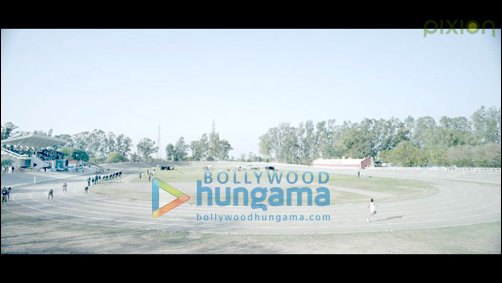 “We used a 5 Camera setup to shoot crowd plates” “In order to replicate the crowds at the stadiums, we went to Delhi and shot reference plates using 8 different Red Epic digital cameras. These were all shot completely flat, Read More">in which we used zoom lenses and setup 5 different angles with a crowd ofRead More
“We used a 5 Camera setup to shoot crowd plates” “In order to replicate the crowds at the stadiums, we went to Delhi and shot reference plates using 8 different Red Epic digital cameras. These were all shot completely flat, Read More">in which we used zoom lenses and setup 5 different angles with a crowd ofRead More"We used a 5 Camera setup to shoot crowd plates"
"In order to replicate the crowds at the stadiums, we went to Delhi and shot reference plates using 8 different Red Epic digital cameras. These were all shot completely flat, in which we used zoom lenses and setup 5 different angles with a crowd of about 200 people sitting closely. We kept shuffling the crowd to reduce monotony and repeat the crowds in the entire stadium. Using Autodesk Max we setup a procedural crowds system. Since we had a moving camera, it was not possible to have the live action crowds on all the plates as it would look 2Dish and flat. As a result, a CG crowd system was setup, where-in we procured references of the texture that would go on the models and applied the same onto the CG crowd. The CG generated crowds would also be waiving their respective country flags which was also made using CGI. WE made use of sprites for crowds that were further behind in the stadium. We shot the characters against chroma backgrounds from 3 different angles, and composited it on a sprite which are these cards used in a 3D space. These sprites have the characters mapped on to these cards removing the green screen from the live action plates. The crowd that was closest to the camera consisted of live action plates, the middle crowds were CGI plates."




-
 “We carried out some animatics as references and showed the director quite a few tests” “There was one particular scene that required meticulous planning as it was a crucial point in the film, Read More">the scene was going from the present to the precedent era. Rakesh wanted it seamless in which the camera in the trainRead More
“We carried out some animatics as references and showed the director quite a few tests” “There was one particular scene that required meticulous planning as it was a crucial point in the film, Read More">the scene was going from the present to the precedent era. Rakesh wanted it seamless in which the camera in the trainRead More"We carried out some animatics as references and showed the director quite a few tests"
"There was one particular scene that required meticulous planning as it was a crucial point in the film, the scene was going from the present to the precedent era. Rakesh wanted it seamless in which the camera in the train showing people talking about how Milkha Singh actually came from Pakistan. Thereafter the camera starts moving out of the train, showing the environment outside then settling on to the rooftop of the train- where-in a younger Milkha was sitting amongst refugees coming in from Pakistan during the partition period. We carried out some animatics as references and showed the director quite a few tests as far as environment is concerned. This was because we had to merge the live action environment onto the CG environment. This was a nostalgic shot that would take us back a few years with a different environment in tow, so it was important that the transition between the cameras were not jerky. The exterior shots of the train were augmented with a CG environment since it was mired with barren lands with trees scantily scattered. Rakesh was really happy with what we put forth on the table, where-in we went ahead with augmenting the scene digitally. In order to execute this process, we conducted a digital stitched between the live action camera plate in the train - and the transition into the CG exterior of the train. Thereafter we had to stitch the shots the other way around from CG to live action. This was a very complicated shot as far as planning was concerned, there was a lot of pre-visualization done and the plates were shot accordingly. Apart from the digital stitching sequence, a lot of research was conducted airplanes of the 40s and 50s era. In one particular shot where Milkha goes to Pakistan, there was a Dakota C-47 plane which was required to release leaflets. We got our references and blueprints of the plane through the internet and remodeled the airplane in CG with falling CGI leaflets. We also did research on the kind of airplanes Pakistan had back then as well, this was basically part of the pre-production phase that went into making the visual effects for the film."




